Chinese carrier-based fighters
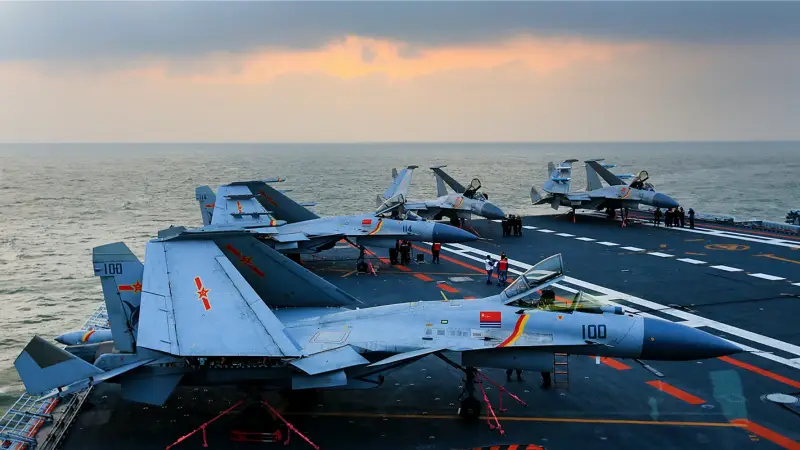
In terms of the pace of construction of warships, China is currently ahead of all other countries, and, according to the views of the PLA Navy command, aircraft carriers in the future should radically increase the strike capabilities of the Chinese fleet and ensure the combat stability of naval groups operating in the oceans far from their shores.
Back in the first half of the 1990s, the Chinese top military-political leadership came to the conclusion that it was necessary to have aircraft carriers in service. Since there was no experience in the design and construction of aircraft carriers in the PRC, decommissioned aircraft-carrying cruisers Project 1143 “Kyiv” and Project 1143.2 “Minsk” were bought in Russia for study.
Aircraft carriers of the PLA Navy
A very successful acquisition in April 1998 was the unfinished aircraft-carrying cruiser Project 1143.6 “Varyag”, for which China paid Ukraine a ridiculous sum of $50 million for such a ship with a displacement of more than 25 thousand tons. According to expert estimates, the level of technical readiness of the aircraft carrier at that time was more than 70%.
Chinese officials initially said the unfinished aircraft carrier would become a floating entertainment center with a casino. The ship arrived in China on March 3, 2002 and was placed in dry dock at the Dalian Shipbuilding Industry Company in Dalian.
The aircraft-carrying cruiser laid down in the USSR underwent a thorough revision, after which a decision was made to complete construction according to a modified design. During construction, heavy missile launchers were cut off from the ship, which made it possible to use the freed volumes for other purposes. Changes were made to air defense systems, radio and navigation equipment. At the beginning of 2011, it became known that China had completed the completion and modernization of the ship, and sea trials had already begun in August.
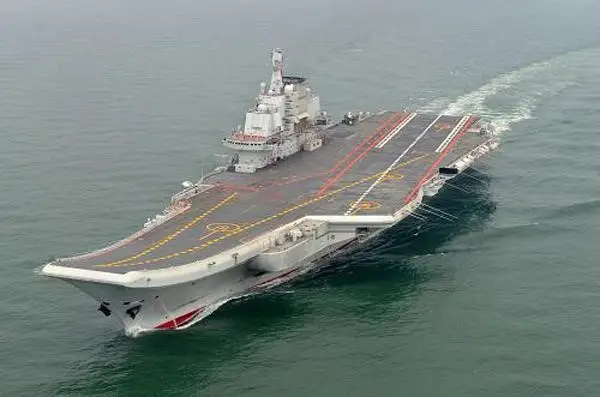
On September 25, 2012, a solemn ceremony of accepting the Type 001 Liaoning aircraft carrier with tail number “16” into the PLA Navy took place in the port of Dalian.
The ship's standard displacement is 55 thousand tons, the total displacement is a little over 70 thousand tons. Length – 304,5 m. Flight deck width – 70 m. Draft – 10,5 m. Four power plants with a capacity of 50 liters. With. provide a maximum speed of 000 knots. The cruising range at an economical 32-knot speed is 18 nautical miles. Crew – 8 people.
To provide close-range air defense, there are three 30-mm Type 1130 air defense systems and three 18-round HHQ-1 air defense missile launchers. Anti-submarine defense, in addition to helicopters, is provided by two 12-round PU PLUR. The aviation wing can include up to 36 aircraft: J-15 carrier-based fighters, Z-18 and Z-9 helicopters, and in the future KJ-600 AWACS aircraft.
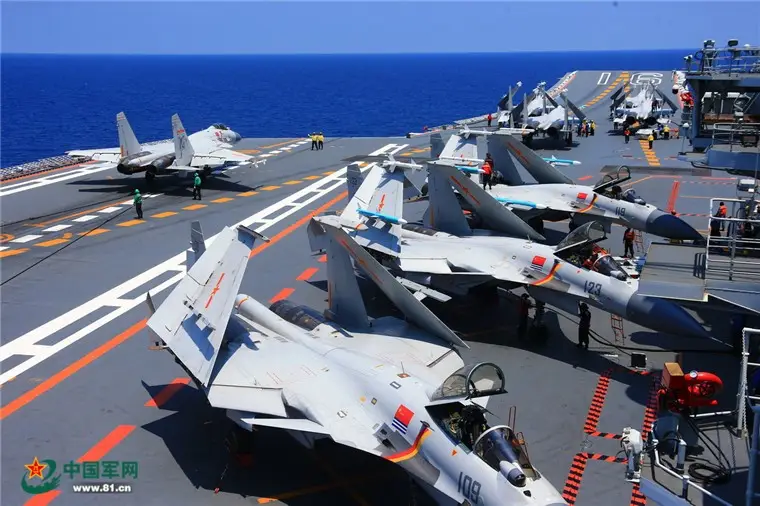
Like the Russian aircraft-carrying cruiser of Project 1143.5 “Admiral of the Fleet of the Soviet Union Kuznetsov,” the first Chinese aircraft carrier does not have an ejection device for launching aircraft, and takeoff takes place using a ski-jump.
In December 2016, the first large-scale exercises took place in the Yellow Sea, in which a naval group led by a Chinese aircraft carrier was involved. During the exercises, actions were practiced to repel enemy strike attacks aviation.
After this, the Liaoning appeared in the central waters of the East China Sea and, following the Miyako Strait, entered the western part of the Pacific Ocean. In January 2017, an aviation group from the Liaoning conducted night takeoff and landing training in the South China Sea. On January 12, 2017, a Chinese aircraft carrier passed through the Formosa Strait, which caused widespread resonance in Taiwan.
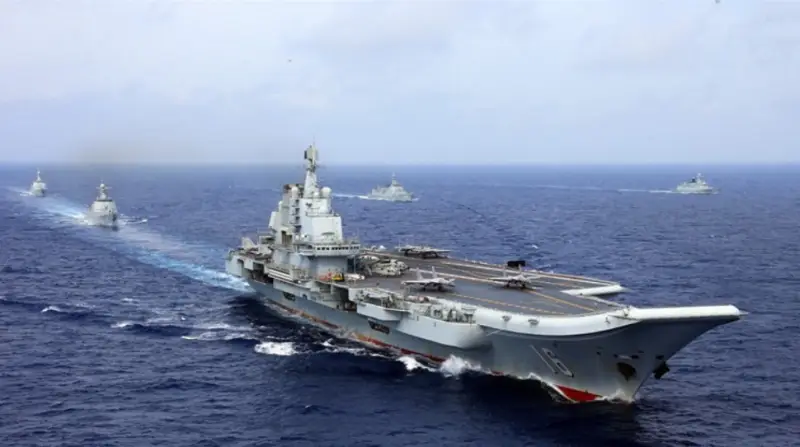
At the beginning of 2021, the Liaoning carrier group sailed to the Spratly Islands, conducting exercises in the Philippine Sea along the way. In the South China Sea, an American AUG led by the aircraft carrier Theodore Roosevelt and an expeditionary group led by a Wasp-class landing ship advanced towards the ships of the PLA Navy.
As American F-18 fighters approached, a flight of J-15s rose from the deck of the Liaoning, located east of Hainan Island. Soon, 25 aircraft took off from Hainan to join the exercises: KJ-500 AWACS aircraft, H-6J missile carriers, Y-8Q anti-submarine aircraft and J-11B fighters. At the same time, H-6Js, under the cover of J-11B and J-15 fighters, simulated attacks with anti-ship missiles on an American warrant. After the US Navy group left the area, the aircraft carrier Liaoning and escort ships visited the disputed islands in the South China Sea.
During the 2021 exercise, the PLA Navy carrier group included a Type 055 guided-missile destroyer, two Type 052D destroyers, a Type 054A frigate, and a Type 901 integrated supply ship capable of carrying 25 tons of fuel and other cargo.
The first Chinese aircraft carrier became part of the Northern Fleet of the PLA Navy, whose immediate area of responsibility is the Yellow Sea and Bohai Gulf. The fleet headquarters is located in Qingdao.
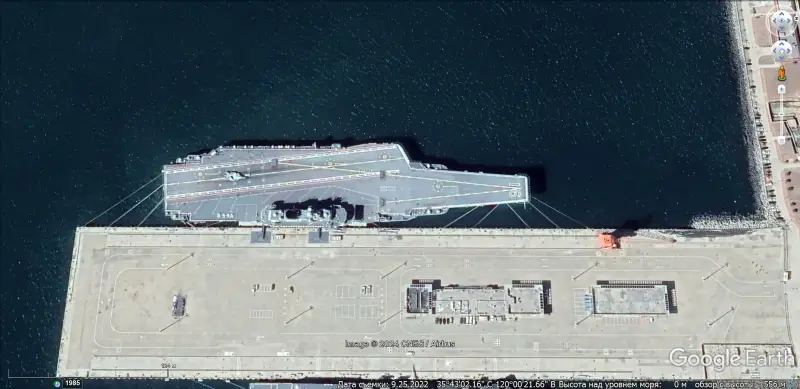
Google Earth satellite image: the Liaoning aircraft carrier at the pier of the Qingdao naval base
The aircraft carrier's parking lot is located in Ligen Wan Bay, located 40 km south of the city of Qingdao. Some destroyers and escort frigates, as well as supply ships, are also based here.
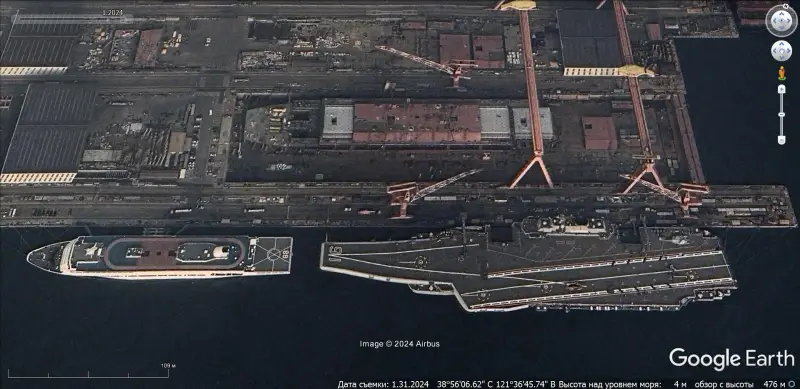
Google Earth satellite image of the aircraft carrier Liaoning and a Type 901 supply ship near the wall of the Dalian shipyard, taken in January 2024
Currently, Liaoning is undergoing repairs and modernization in Dalian. During the work, in addition to replacing worn-out components, the ship will receive new radio-electronic equipment.
In November 2013, another aircraft carrier of the Type 002 project (tail number “17”), named “Shandong,” was laid down at the shipyard in Dalian. The ship was launched in April 2017, becoming the first aircraft carrier built entirely in China. Construction costs are estimated at $4,5 billion.
It is believed that the Shandong, like the Liaoning, is equipped with liquid fuel boilers that drive steam turbines with a total capacity of 50 liters. With. The second Chinese aircraft carrier has approximately the same dimensions, displacement, range and speed and the same composition of the aviation wing.
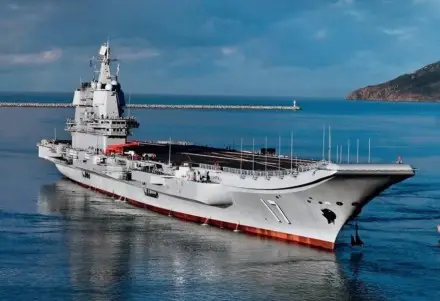
However, there are a number of significant differences.
Thus, the takeoff ramp of the Type 002 aircraft carrier has an angle of 12,0° instead of 14,0° on the Liaoning, which is considered optimal for the takeoff of the J-15 fighter. By rearranging the superstructure, space was freed up to allow an increase in the number of aircraft on deck. Improved visibility from mission control.
On the outer surfaces of the “island” there are four antennas with an AFAR of the improved Type 346A S-band radar. The Shandong is also equipped with a powerful active electronic jamming station designed to counter enemy communications, radars, navigation systems and guidance of guided weapons.
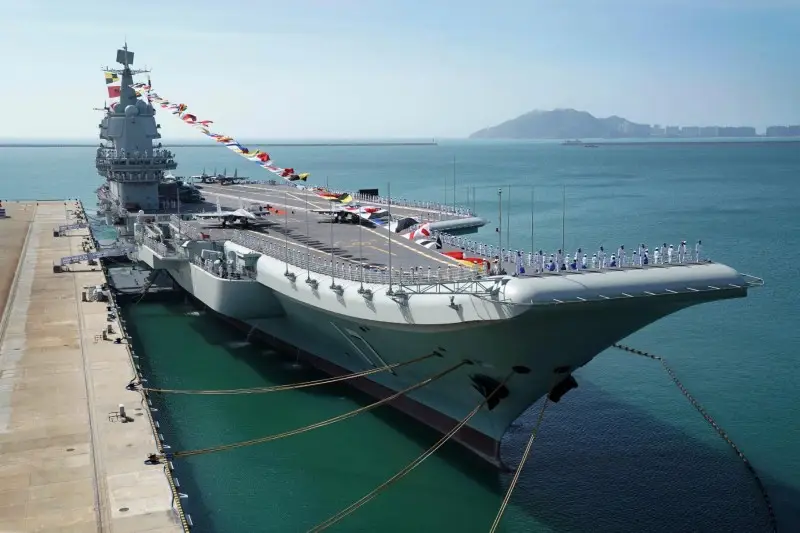
Sea trials of the aircraft carrier on the high seas began in August 2018. At the same time, a model of the J-15 fighter was installed on the upper deck. In February 2019, the transfer of fuel and supplies from the Type 901 supply vessel while underway was completed. In May, the J-15 fighter took off and landed on the deck.
In November of the same year, an aircraft carrier force consisting of Shandong, destroyers, frigates, nuclear submarines and support ships conducted exercises in the South China Sea. After this, the aircraft carrier visited the Sanya naval base, and on December 26, 2019, proceeded through the Formosa Strait to the shipyard in Dalian for maintenance.
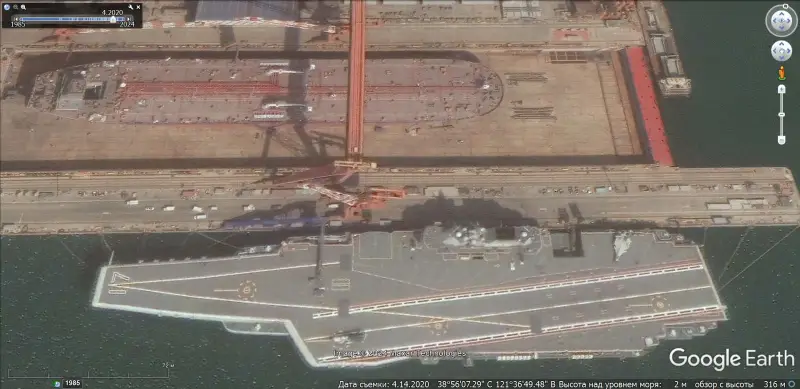
Google Earth satellite image: the Shandong aircraft carrier near the wall of the shipyard in Dalian, the image was taken in April 2020
The home port of the Shandong aircraft carrier is the Sanya naval base on Hainan Island, which is under the control of the Southern Fleet.
By examining publicly available satellite images, we can come to the conclusion that an aircraft carrier with tail number “17” goes to sea much more often than a ship of a similar class with tail number “16.” Chinese observers write that this is explained by the fact that the Liaoning is largely a training and experimental ship, on which various new items were tested and the necessary amount of knowledge was collected. In turn, “Shandong” became a full-fledged combat unit, on which the identified defects that interfered with full operation and combat service were largely eliminated.
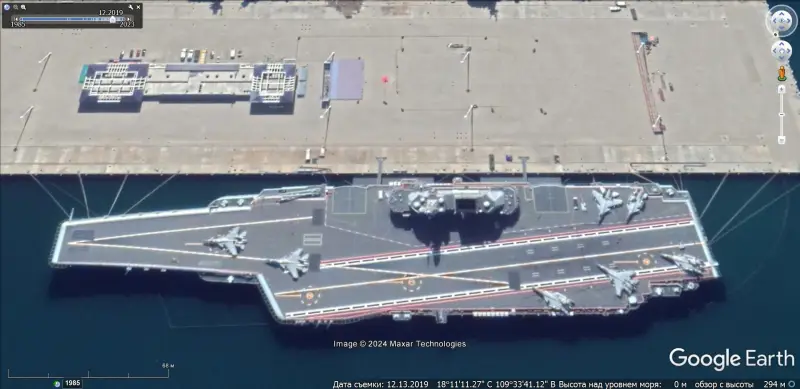
Satellite image of Google Earth: the aircraft carrier "Shandong" in the parking lot of the Sanya naval base, on the deck there are J-15 fighters with weapons on external slings
Satellite images show that, unlike the Liaoning, the Shandong constantly carries carrier-based fighters. Western experts believe that one of the main tasks of the carrier wing is to cover the SSBN Project 094, which are also based in Hainan.
In 2018, construction began on the second-generation Chinese aircraft carrier Type 003 Fujian. The ship was launched on June 17, 2022.
The ship's total displacement can reach 85 thousand tons. According to estimates, its length can be 320 m and its width 76 m. From previous projects, Fujian inherited a non-nuclear power plant (8 supercharged boilers and 4 steam turbines).
The new aircraft carrier has a flat flight deck and has abandoned the ski jump. Instead, three electromagnetic catapults are installed. The length of the catapult channels is approximately 105 m. The presence of such catapults will significantly increase the take-off weight of launched aircraft, which will have a positive effect on their combat load and time in the air.
The air wing may have more than 60 fixed-wing aircraft, helicopters and mid-range UAVs. The main striking force should be the new J-15T and J-35 (FC-31 Falcon) fighters, up to 40 units. Also on board the aircraft carrier can be based search and rescue helicopters Z-20KS and anti-submarine Z-20F.
The naval helicopters of the Z-20 family are largely copied from the American SH-60 Seahawk and have a folding main rotor. These helicopters, recently adopted by the PLA Navy, are expected to replace the larger Z-18s on the decks of aircraft carriers.
Air defense systems are represented by four FL-3000N air defense systems and four 30-mm Type 1130 artillery mounts. Air and surface space control is planned to be carried out using two radars with AFAR.
The completion of the afloat aircraft carrier Fujian is being carried out at the Jiangnan Shipyard in Shanghai, which is part of the state-owned China State Shipbuilding Corporation.
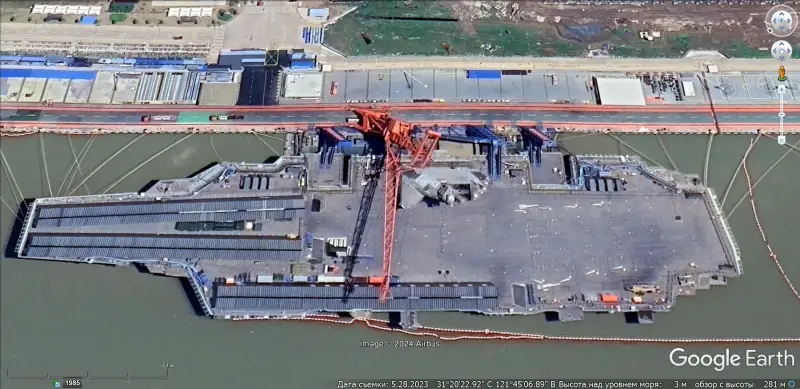
Google Earth satellite image: the Fujian aircraft carrier at the outfitting wall of the Jiangnan Shipyard in Shanghai
Naval analysts believe that the Fujian could be transferred to the PLA Navy in 2025.
In the future, the construction of another aircraft carrier based on the improved Type 004 project is expected. But it, apparently, will begin only after comprehensive tests of the Fujian, during which they will try to identify its main shortcomings.
Materials in the open Chinese press say that the displacement of this ship will be about 100 thousand tons, and it will be able to accommodate more than 80 airplanes and helicopters. The nuclear power plant will provide a speed of more than 30 knots and an unlimited range. Assembly of the new aircraft carrier's hull is expected to begin at the Jiangnan Shipyard in the near future.
Carrier-based fighters of the J-15 family
When starting the construction of their first aircraft carrier, the Chinese planned to purchase Su-33 carrier-based fighters from Russia. However, during the negotiations, the number of purchased aircraft was reduced from 50 to 2, after which it became quite obvious that China wanted to unauthorizedly copy these aircraft without paying for a license, and the Russian side abandoned the deal.
A solution was soon found in the form of purchasing a T-10K-3 aircraft from Ukraine, which was the third prototype of the Su-33. Having an experienced carrier-based fighter and part of the design documentation, Chinese specialists developed a fighter very close to the Su-33.
According to Chinese data, the maximum take-off weight of the J-15 reaches 32,5 tons. But a plane with such weight cannot take off from an aircraft carrier without a catapult. A safe takeoff with a short takeoff run using a ski-jump is possible with a weight of about 27 tons.
The first J-15s were powered by Russian-made AL-31F3 engines. Some of the later carrier-based fighters are equipped with Chinese WS-10 engines, which have slightly higher thrust during emergency takeoff. The maximum speed at altitude is 2 km/h. Ferry range – up to 360 km. Combat radius – up to 3 km.
The J-15 appeared much later, and its avionics are more advanced than those of the Su-33. The fighter is armed with a built-in 30 mm cannon with 150 rounds of ammunition. Twelve external hardpoints can accommodate a combat load weighing up to 6 kg. Including: free-falling and guided bombs, NAR, YJ-500K and YJ-83 anti-ship missiles, KD91 air-to-surface guided missiles and LD-88 anti-radar missiles.
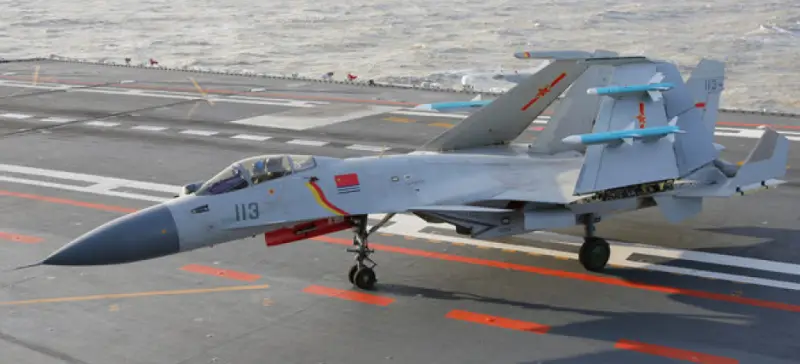
The PL-9 and PL-10 missile launchers are designed to destroy an airborne enemy in close combat; the PL-12 missile launcher is available for medium distances. In terms of its ability to combat surface and ground targets, the J-15 is many times superior to the Su-33.
Taking into account the fact that the Shenyang Aircraft Industry Group in Shenyang successfully mastered the production of structurally and technologically similar J-11 fighters, the assembly of the J-15 was quickly established, and the first aircraft took off in August 2009. On November 23, 2012, the J-15 successfully completed takeoff and landing tests on the Liaoning aircraft carrier.
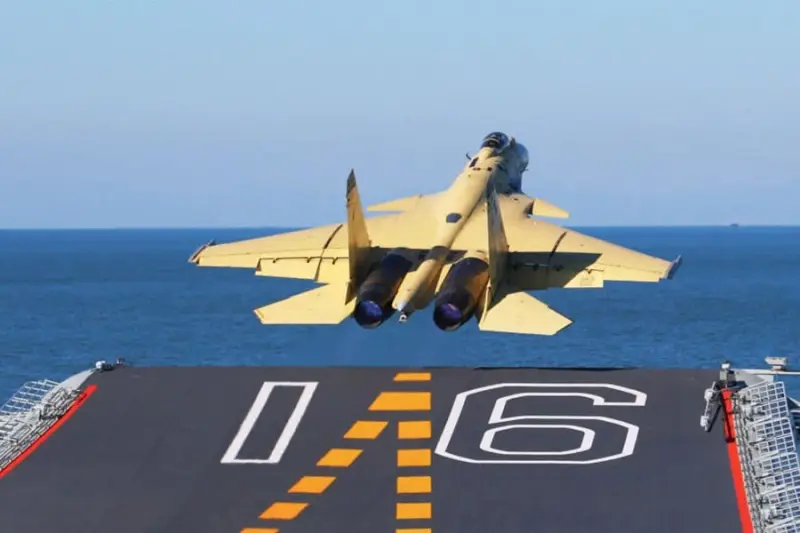
As of September 20, 2013, seven flying J-15 prototypes have been built. In December 2013, the J-15 carrier-based fighter was adopted by the PLA Navy. In October 2017, the air wing of the Liaoning aircraft carrier was equipped with 24 J-15 fighters.
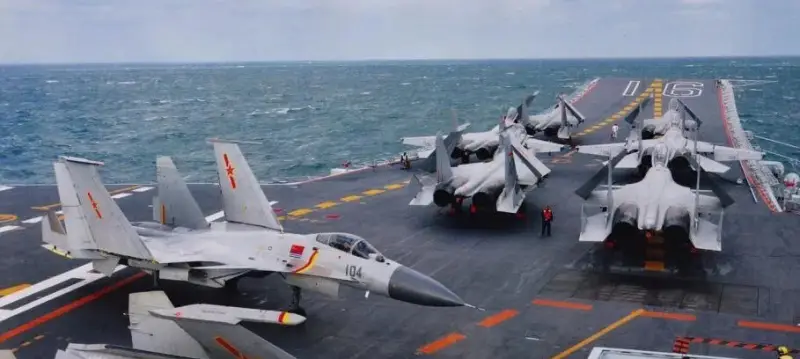
In November 2012, flight tests of the two-seat combat trainer J-15S began. From the very beginning, the aircraft was equipped with Chinese WS-10 engines and had equipment for refueling and transferring fuel in the air.
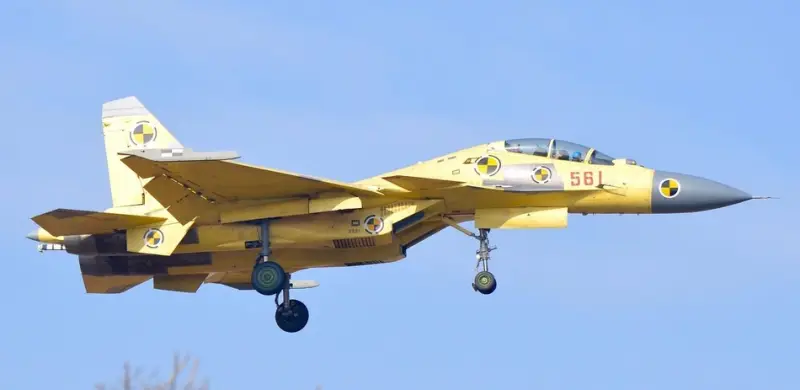
The Sparka has flight characteristics close to those of a single-seat vehicle, the same composition of avionics and weapons, but the flight range is somewhat shorter.
Based on the two-seat J-15S fighter, the J-15D carrier-based electronic warfare aircraft was created.
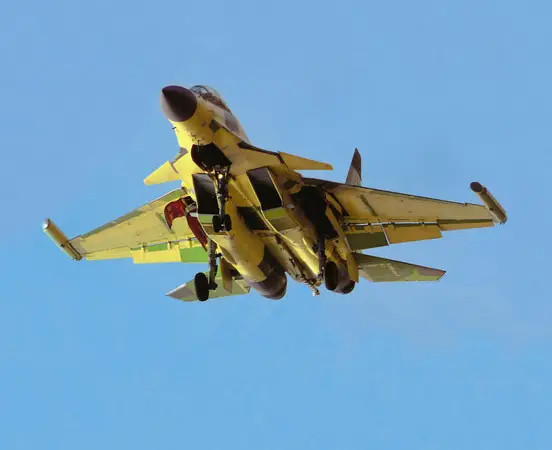
There is little information about this aircraft. It is known that a passive forward-looking thermal imaging system and a built-in 30-mm cannon were removed from the vehicle, intended for group cover of carrier-based aircraft.
Today, the most advanced modification in the Chinese family of carrier-based fighters, descending from the Su-33, is the J-15T, which made its first flight in July 2016. Already in November 2016, this aircraft was launched using a ground-based electromagnetic catapult. The fighter is believed to be intended for deployment on the Type 003 and Type 004 aircraft carriers. Official photographs of the J-15T were first unveiled on December 17, 2021.
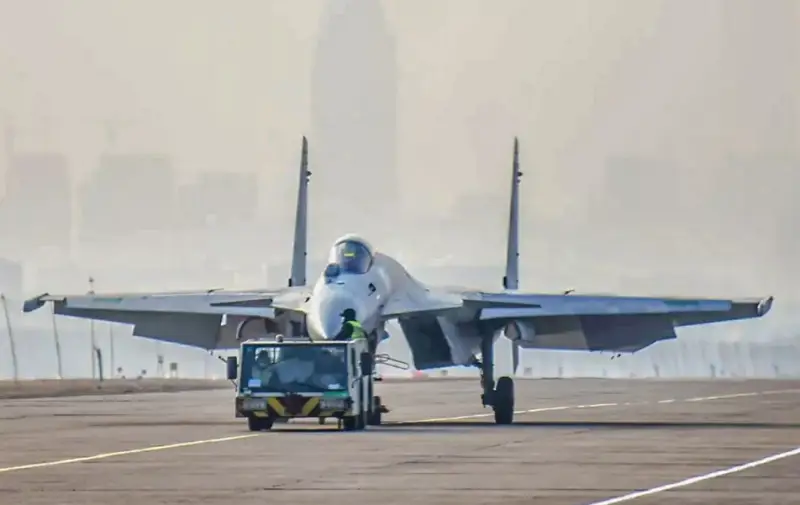
The main external difference between the J-15T and the operational J-15s based on the Type 001 and Type 002 ships is the modified shape of the wing tips and a different front landing gear, adapted for a catapult. The aircraft uses more powerful Chinese WS-10C engines with a maximum thrust of up to 147 kN.
The avionics have undergone a significant update. Without disclosing details, Chinese media say that the J-15T has a new powerful radar with AFAR, as well as an advanced fire control system combined with an advanced adaptive information display system. There were more composites in the airframe design, which made the aircraft lighter and reduced radar signature. The volume of internal fuel tanks also became larger, which increased the flight range.
In terms of its characteristics, the J-15T may be the most advanced carrier-based fighter designed to gain air superiority and provide air defense to a naval group.
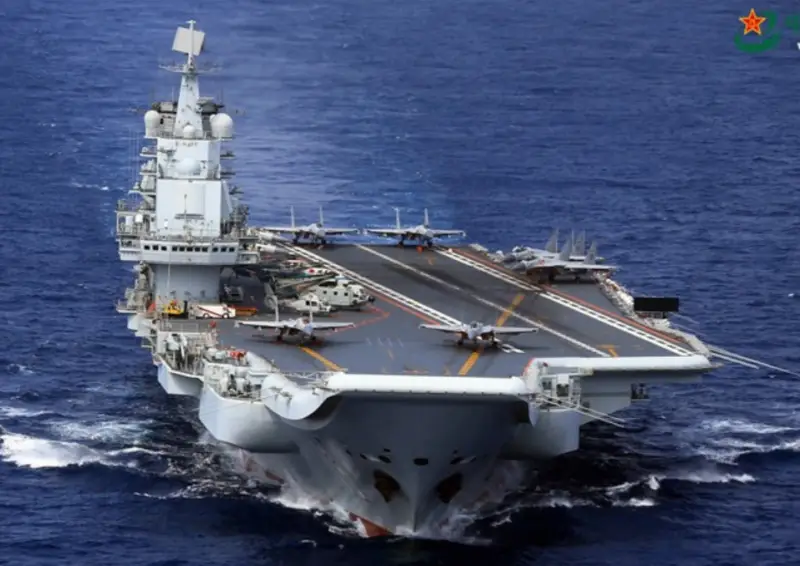
As of the end of 2021, more than 65 single-seat and two-seat J-15 fighters had been built along with development prototypes.
At the airfield, located near the city of Xingcheng in Liaoning province, a take-off and landing complex was built, similar in purpose to the Russian Nitka complex at the Saki airbase in Crimea.
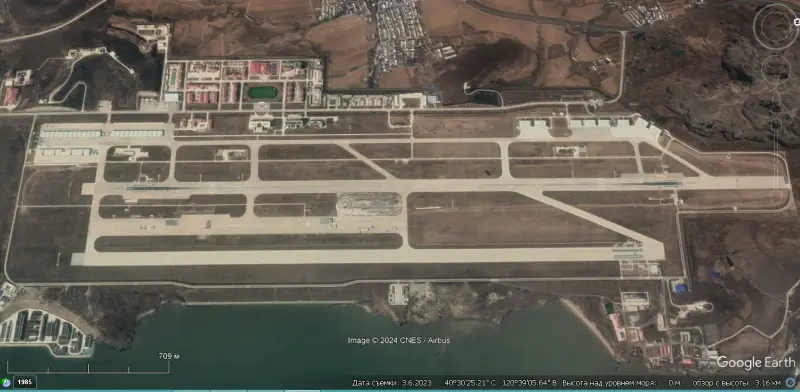
Google Earth satellite image: Xingcheng Air Base
At the Xingcheng base there are two runways with ski-jumps and aerial arrester units that simulate the conditions for take-off and landing on the deck of the Liaoning and Shandong aircraft carriers.
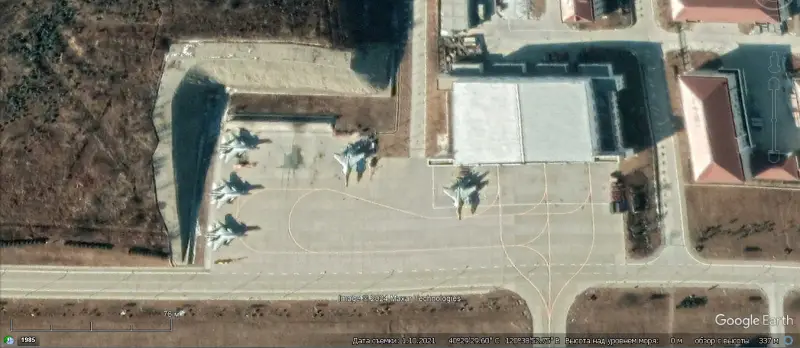
Google Earth satellite image: J-15 fighters at Xingcheng Air Base
According to some reports, an experimental electromagnetic catapult began operating here in 2016. The Huludao naval training ground in Liaoning province is also used for carrier-based aviation.
Carrier-based fighter J-35
The first Chinese aircraft carriers, basically repeating the Soviet project 1143.6, are relatively small for warships of this class, which makes it difficult to accommodate large enough J-15 fighters on them.
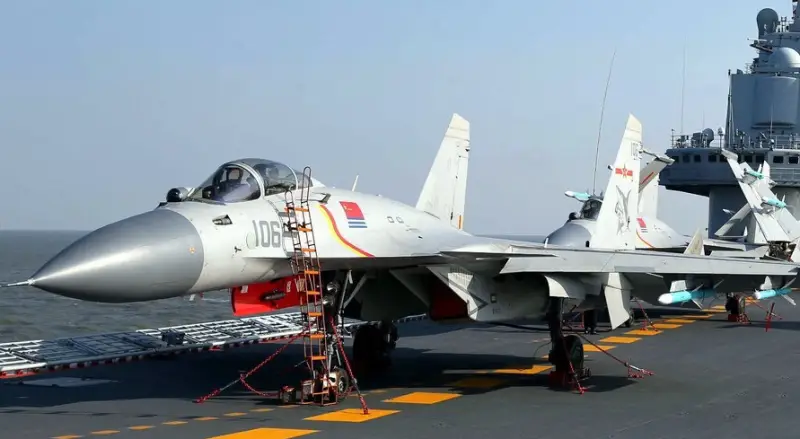
In this regard, even before the launch of the Liaoning aircraft carrier, the Shenyang Aircraft Industry Group aircraft manufacturing corporation began to create a smaller carrier-based fighter, which was supposed to correspond to the American F-35 Lightning II.
The new generation carrier-based aircraft should become a “universal soldier”, capable of conducting close-in air combat and interception, but mainly focused on strike functions. Particular emphasis was placed on reducing radar signature, high pilot information awareness and an expanded set of weapons.
Research work on this project is being conducted at the Yanlan Flight Research Center, which uses the runway of the Xi'an Aircraft Company (XAC) aircraft factory in the vicinity of Xi'an, Shenxi Province. However, due to the high level of secrecy, immediately after testing, prototypes were removed to hangars, and they could not be found on publicly available satellite images.
The first flight of the prototype took place in October 2012, but the aircraft is still being fine-tuned. The prototype, known as the FC-31 Falcon, was displayed at the 2014 Zhuhai Air Show.
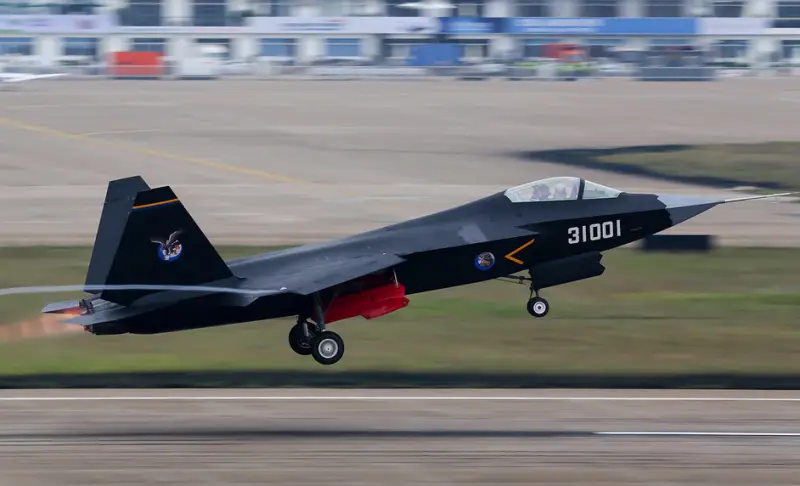
The first copy (FC-31 1.0) was intended to test layout and aerodynamic solutions, was equipped with two Russian-made RD-93 engines and had a simplified avionics.
The intermediate prototype aircraft (FC-31 2.0), which appeared at the end of 2016, had numerous changes in the equipment and airframe. The most noticeable external difference was the modified shape of the tail. According to unconfirmed information, this example used WS-13 turbofan engines, which smoked heavily with a sharp increase in thrust.
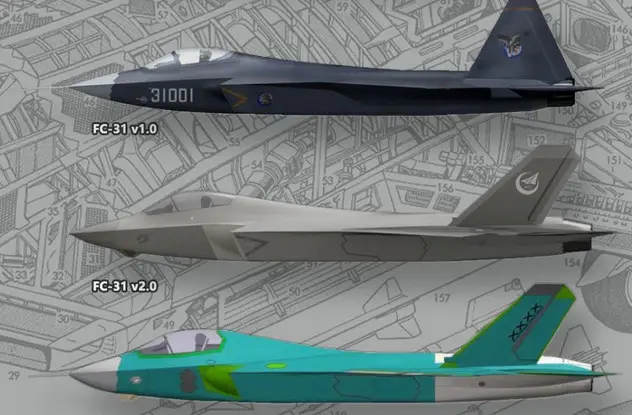
In September 2020, the third prototype took off (FC-31 3.0), which may have had an AFAR radar installed, and its engines no longer emitted black smoke.
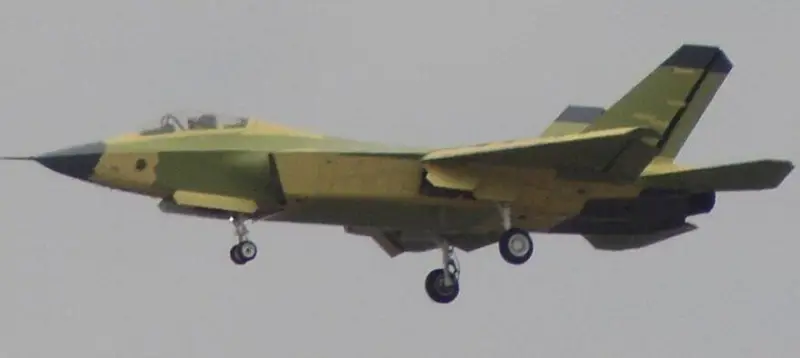
In 2021, photographs of the Chinese equivalent of the F-35 appeared along with other aircraft on the “deck” of a model aircraft carrier made of concrete, built 20 km south of the city of Wuhan in Hubei province.
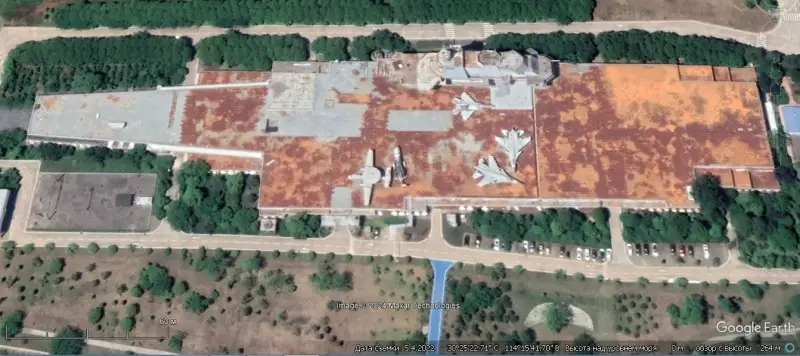
Google Earth satellite image: a concrete “aircraft carrier” in the vicinity of Wuhan
At the end of 2021, it became known about the testing of a deck version with a folding wing, a landing gear adapted for launch from a catapult, and a landing boom. The serial carrier-based version of the fighter will be designated J-35.
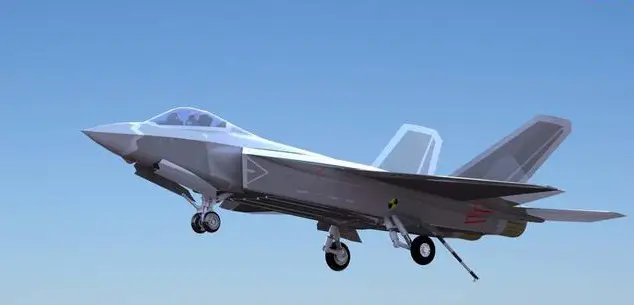
According to promotional materials, the maximum take-off weight of the aircraft is 28 tons, normal - 17,5 tons. The design maximum flight speed at high altitude is just over 1 km/h. Ceiling – 900 m. Combat radius without refueling – 16 km/h. With one refueling – 000 km. Combat load – up to 1 kg.
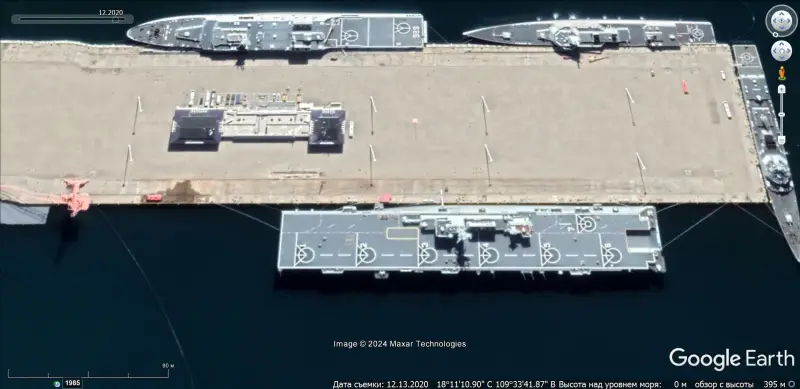
Google Earth satellite image: Type 075 helicopter carrier parked at the Sanya naval base
English-speaking experts believe that China will not stop at creating a carrier-based fighter capable of taking off from land strips or from the deck using an electromagnetic catapult.
Taking into account the presence of Type 075 helicopter carriers in the PLA Navy and the construction of new ships of this class, the appearance of modifications of the J-35 with vertical or short take-off is very likely. In this case, the capabilities of the PLA Navy in terms of air support for landings will increase significantly when conducting operations far from its shores.
Articles from this series:
Chinese naval aviation helicopters
PLA Navy Aviation: basic patrol and reconnaissance aircraft
Prospects for replacing base patrol and reconnaissance aircraft with drones in Chinese naval aviation
Long-range radar patrol aircraft of Chinese naval aviation
Bomber and missile-carrying aircraft of the Chinese fleet
Chinese naval fighters based at coastal airfields
Information